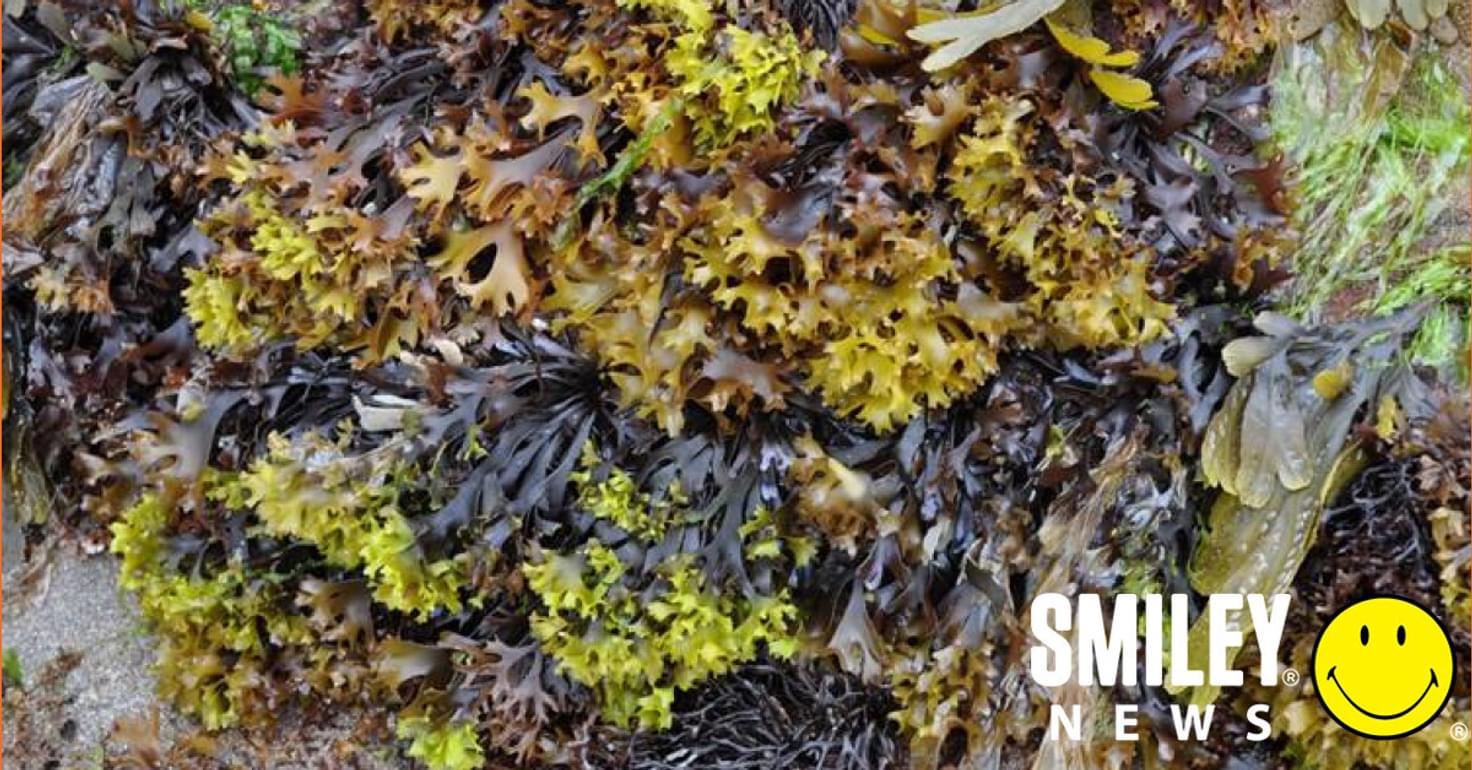
Words by Smiley Team
There are more than 650 species of seaweed found around the UK – from dabberlocks to bladder wrack and sugar kelp – and each plays a vital role in supporting the health of our seas, and the planet.
That’s why the Marine Conservation Society and Natural History Museum will be asking people across the UK to get involved and spot seaweed at the seaside as part of its first Big Seaweed Search Week from From 26 July – 1 August 2021.
The Big Seaweed Search equips beachgoers with the knowledge to identify 14 of the most common types of seaweed found at the UK seaside – seaweeds are a marine ‘wonder plant’ and are one of the ocean’s best tools to absorb and lock in carbon, vital in fighting the climate crisis.
[Read More: How to protect animals during a heatwave]
This information is then shared with the Natural History Museum and Marine Conservation Society, who use the data to inform research on how the presence of different seaweed has changed over time due to environmental factors such as climate change.
Professor Juliet Brodie, merit researcher at the Natural History Museum and Big Seaweed Search, explains: “As climate change affects our seas, we’re seeing temperature increases, sea level rise and the impact of ocean acidification. These changes can affect the distribution of different seaweed species around the UK coastline.
“For example, dabberlocks, a large brown seaweed, is declining in abundance around our coasts, and the number of non-native species in the seaweed flora is increasing year on year. By mapping where different seaweed species are, we can create a baseline from which to determine the impact of environmental changes on our seas.”
Some of the most common and best known seaweeds are brown seaweeds: bladder wrack, with distinctive air-filled bladders and spiral wrack, which often has a spiral twist. Also easily identified is sugar kelp, which has a tough, elongated strap-shaped frond that has a crinkled, dimpled or ruffled surface. Kelps are cold water species, and form kelp forests in many parts of the world’s seas.
Not only are seaweeds a great source of nutrients and energy for animals such as crabs and sea urchins, but they also create critical habitats for other species, acting as nurseries for young fish and places where other sea creatures can take cover from predators.
[Read More: Beach wheelchairs let care home residents enjoy the sea]
Seaweeds such as kelp are also vital ‘blue carbon’ stores, absorbing carbon from the water and atmosphere just like forests on land. The storage of blue carbon can be in the plants themselves, like seaweed and seagrass; in the seafloor sediment where plants are rooted; or even in the animals which live in the water, including seabirds, fish and larger mammals. Unfortunately, 38% of kelp populations are reported to be declining around the world, limiting ocean ecosystems’ abilities to absorb carbon and fight the climate crisis.
Justine Millard, head of volunteer and community engagement at the Marine Conservation Society said: “We’re hoping lots of people will join Big Seaweed Search Week this year as they head to the coast. We want people across the UK to learn about the wonders of seaweed, spread the word, and help us collect vital information which will support our ongoing research."
The Natural History Museum and Marine Conservation Society have developed a helpful guide, highlighting key features of the different seaweeds likely to be spotted by the seaside.
To get involved, just complete the simple survey on a mobile, tablet or computer which can be carried out as an individual or in groups. You can visit the Big Seaweed Search website for all the information you’ll need to get started.